Industrial applications of laser cutting encompass a broad spectrum of industries, showcasing the precision and adaptability of the technology. Manufacturers in various sectors, from aerospace engineering to the automobile industry, leverage laser cutting machines to craft components with unparalleled precision and efficiency. In the automobile sector, laser cutting is pivotal for producing complex body panels, exhaust systems, and chassis parts. Similarly, in the aerospace industry, it plays a crucial role in fabricating light yet strong airplane components such as body panels, engine parts, and turbine blades.
Advanced laser technology is employed in laser cutter operations, providing precise cutting capabilities. These devices achieve material cuts with minimal distortion by focusing a concentrated laser beam onto the material’s surface, heating it until it melts or vaporizes. To ensure desired cutting outcomes, several factors, including laser power, focus, and speed, are meticulously managed. This technique enables industrial manufacturers to realize complex shapes, maintain close tolerances, and achieve superior finishes on a variety of materials.
Laser cutting offers numerous advantages across different industrial applications. Its unmatched precision allows for the creation of complex designs with millimeter-level accuracy, elevating the standard and quality of the final product, reducing the need for manual rework, and boosting overall productivity. Being a non-contact process, it minimizes material deformation and reduces the risk of damaging sensitive components. The speed and efficiency of laser cutting enable industrial manufacturers to quickly adapt to market changes and meet tight production schedules.
Despite its many advantages, industrial manufacturers must also be cognizant of laser cutting’s limitations. Materials with high heat conductivity or reflectivity pose challenges in achieving quality cuts. The technology may also be less effective for cutting very thick materials or intricate shapes, necessitating alternative machining processes. The substantial initial investment in laser cutting equipment, along with ongoing maintenance and operational costs, are considerations for businesses.
In the medical device manufacturing sector, laser cutting’s unique features make it an excellent choice for precisely crafting delicate components. The technology enables the production of exact, intricately shaped implants, surgical tools, and medical equipment. Non-contact laser cutting reduces the risk of contamination and minimizes the chance of introducing foreign particles into the instruments, maintaining the safety and reliability of medical devices. Additionally, laser cutting’s low thermal impact preserves the integrity of heat-sensitive materials often used in medical applications.
1. Electronics
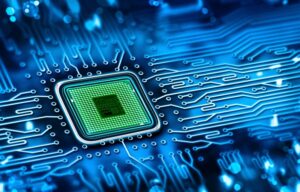
The electronics industry encompasses the conceptualization, production, and distribution of electronic devices and components, including semiconductors, consumer electronics, and telecommunications equipment. Given the ubiquity of electronics, from smartphones and computers to medical and automotive devices, the industry is crucial to modern life.
Laser cutting is extensively utilized in the electronics industry for a variety of critical purposes, thanks to its exceptional accuracy and versatility. One application is the fabrication of Printed Circuit Boards (PCBs), which serve as the backbone of electronic devices by providing mechanical support and electrical connectivity. PCBs are accurately drilled and cut using lasers, allowing for the creation of intricate patterns and holes for mounting components and routing electrical lines. Such precision is essential for ensuring the functionality and reliability of electronic equipment.
Additionally, laser cutting plays a role in the manufacture of electronic housings and enclosures, which protect components from environmental factors like moisture, dust, and electromagnetic interference. The ability to precisely fabricate complex shapes and patterns in a range of materials, including plastics and metals, makes laser cutting ideal for creating custom enclosures tailored to specific device requirements.
The importance of laser cutting in the electronics industry cannot be overstated. The increasing demand for electronic devices that are lighter, more compact, and more powerful necessitates high precision and flexibility in manufacturing processes. Laser cutting meets these needs, enabling the production of complex components and structures with minimal material waste. Its ability to process a wide variety of materials, from metals to polymers and ceramics, opens up possibilities for creativity and innovation in electronics manufacturing.
Laser cutting offers numerous benefits to the electronics industry. Its high precision enables the creation of complex shapes and fine features with minimal error, which is critical for the performance and functionality of electronic components and systems. The non-contact nature of laser cutting reduces the likelihood of damage to substrates and delicate electronic components. Moreover, laser cutting is a highly efficient and cost-effective method of production, reducing waste and production time compared to traditional methods such as mechanical cutting or etching. As an indispensable tool for fostering efficiency and innovation, laser cutting plays a vital role in enabling the production of cutting-edge electronic devices that power the modern world.
2. Automotive
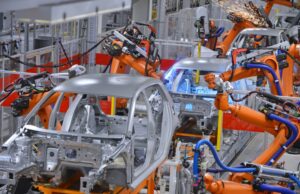
The automotive industry is a cornerstone of modern transportation infrastructure, encompassing the design, production, and distribution of motor vehicles. In this sector, precision, efficiency, and safety are paramount. Laser-cutting technology has become indispensable in the automotive industry for its ability to meet the strict tolerances required for manufacturing numerous components. The need for sophisticated shapes and patterns in modern automotive components has made laser cutting the preferred method for its unmatched flexibility compared to older processes like die-cutting and stamping.
Laser cutting is employed in the automotive sector to produce a wide array of components, including exhaust systems, vehicle doors, brakes, and hydro-formed parts. These components demand high precision to ensure optimal vehicle performance and safety. Fiber laser cutting technology, known for its precision and efficiency, has become the method of choice, surpassing traditional cutting methods like plasma cutting. The ability of fiber laser cutters to handle intricate or small components with minimal material waste enhances the efficiency and cost-effectiveness of automotive production processes.
One of the key advantages of laser cutting in the automotive sector is its applicability to various materials, including metals and textiles. For instance, metal components are precisely cut using laser cutting equipment without compromising the material’s integrity, ensuring reliability and durability in automotive applications. Additionally, the precision and clean cutting edge provided by laser cutting are crucial for materials used in airbags; essential for maintaining the efficacy of vehicle safety systems.
3. Medical
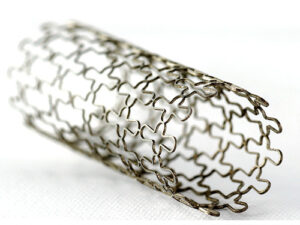
The medical industry encompasses a wide range of activities related to diagnosing, treating, and preventing human diseases and injuries. It includes sectors such as hospitals, clinics, pharmaceuticals, medical equipment, and research facilities. Laser cutting is essential in the creation of products crucial to medical procedures and patient care.
Due to its ability to produce precise and detailed cuts in various materials, laser cutting is extensively used in the medical device industry. Technologies such as pacemakers, stents, catheters, implants, surgical instruments, diagnostic tools, and medical tubing are made possible through laser cutting. The process involves using a powerful laser beam to melt, vaporize, or burn away material, resulting in precise incisions. Its accuracy is critical for medical devices intended for use inside the human body, as even minor defects can significantly impact patient safety and health outcomes.
The medical industry greatly benefits from laser cutting, as it allows for the creation of complex medical equipment more accurately and efficiently. Medical device manufacturers can achieve tight tolerances, intricate geometries, and high-quality finishes using this advanced production method, which is unattainable with traditional machining techniques. It enables the development of innovative medical solutions that improve treatment outcomes and advance medical research and technology.
Laser cutting offers several advantages, making it the preferred method for producing medical devices. Its versatility is a major benefit; laser cutting equipment can process a variety of materials, including titanium, stainless steel, and various polymers commonly used in medical applications. This adaptability allows for the fabrication of a wide range of medical devices to meet the specific needs of both patients and healthcare professionals. As a non-contact process, laser cutting is also used to produce sterile medical equipment, reducing the risk of contamination and damage to sensitive materials. Moreover, the high programmability and automation of laser cutting enhance the efficiency, cost-effectiveness, and scalability of medical device production. The adoption of laser cutting technology in the medical field contributes to improving healthcare by enabling the production of innovative, safe, and effective medical equipment that benefits people worldwide.
4. Metalworks
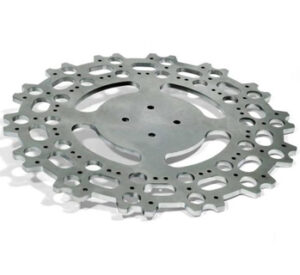
Metalworking encompasses a range of techniques for shaping and molding metal to create desired components, structures, and forms. It includes various tools and processes, one of which is laser cutting, widely used in the metalworking industry. Laser cutting employs a powerful laser beam to accurately cut through materials, including metal, and produce complex shapes and patterns. This technique has found widespread application in various industries, such as aerospace, automotive, and construction.
Laser cutting is crucial in metalworking because it allows for the fabrication of a wide range of products required for different purposes. Items such as pipes, tubes, beams, columns, and sheet metal components are commonly produced. These products are essential components in many industries, including construction, automotive manufacturing, and aerospace component production. The precise dimensions and intricate shapes achieved with laser cutting meet the demanding requirements of modern industrial applications.
The incredible accuracy, speed, and versatility of laser cutting in processing a wide range of metals make it a valuable tool in metalworking. Maintaining such a high level of precision is essential for producing consistent quality components, designing intricate patterns, and achieving strict tolerances. Laser cutting offers a cost-effective solution for both large-scale production runs and small-scale prototypes, enhancing the flexibility and efficiency of manufacturing processes.
Using laser cutting in metalworking presents several advantages. One of the main benefits is the increased design freedom it provides, enabling the creation of complex, custom parts that are challenging, if not impossible, to produce using traditional cutting methods. Laser cutting reduces material waste by optimizing cutting paths and minimizing the need for additional finishing steps. Its ability to support rapid manufacturing cycles results in faster lead times and quicker time-to-market for finished products. The improved precision and repeatability that laser cutting offers lead to higher quality and consistency across batches of produced components. Incorporating laser cutting technology into metalworking processes enhances productivity, accuracy, and competitiveness across various industries.
5. Printing
Printing involves transferring text and images onto various materials for industrial applications, including paper, fabric, plastic, and metal. It encompasses several different techniques, such as offset printing, screen printing, and digital printing. In recent times, digital printing has gained popularity due to its cost-effectiveness, versatility, and ability to produce high-quality prints with minimal setup time.
The printing industry extensively uses laser cutting, especially in digital printing, where it is integrated into printing operations with multiple benefits. One application is contour cutting, where laser technology automates the accurate cutting of printed parts on fabric or other textile materials. This is particularly useful for materials used in labels, signs, banners, and flags, which are prone to stretching or deformation.
Printing demands laser cutting because manufacturing processes require speed, precision, and efficiency. Achieving precision with traditional cutting methods is challenging, especially when dealing with delicate or intricate designs. Laser cutting addresses these challenges by offering a non-contact method that minimizes material drag and ensures accurate, high-quality cuts.
Laser cutting is valued in the printing industry for improving product quality and streamlining manufacturing processes. By using laser cutting machines that automate cutting processes and incorporate advanced technologies like photo recognition systems, manufacturers achieve precise results with minimal manual intervention. This enhances overall operational efficiency, reduces waste, and increases output.
Laser cutting offers several advantages in the printing industry. The first benefit is rapid processing times, enabling manufacturers to meet tight deadlines and customer demands. Laser cutting leaves synthetic materials with clean, sealed edges, reducing the need for additional finishing steps and the risk of fraying. The versatility of laser technology allows for easy cutting of a wide range of materials, including plastics and fabrics, opening up new opportunities for innovative designs and applications.
6. Packaging
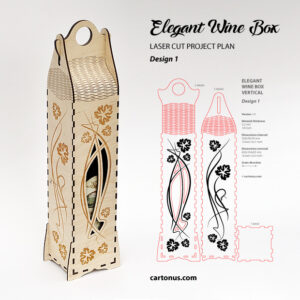
Packaging involves enclosing products or goods in protective materials for storage, transportation, sale, and use. It aids in marketing and transportation and protects against contamination, damage, and theft. Packaging ranges from simple containers like boxes and bags to more complex structures like blister packs and clamshells. Its primary function is to ensure that the product inside reaches the end customer intact and in excellent condition.
The packaging industry has found laser cutting to be a crucial technology due to its precision, versatility, and efficiency. Laser cutting technologies are used in packaging for various purposes. One advantage is the ability to customize and brand products by accurately fabricating complex shapes and patterns. For instance, intricate designs or logos can be precisely etched onto packaging materials, enhancing the product’s appearance and brand recognition. Laser cutting also enables the production of precise score lines and perforations, facilitating easy tearing or opening of packaging. This is particularly important for consumer convenience and user experience.
Laser cutters are essential in packaging, especially in today’s competitive market, where innovation and utility have become major selling points. The rapid prototyping and customization capabilities offered by laser cutting technologies enable package producers to quickly respond to changing consumer preferences and market demands. For mass production, laser cutting is a preferred option as it significantly reduces production time and costs compared to traditional die-cutting processes.
Beyond cost-effectiveness and aesthetics, packaging laser cutting offers advantages. The non-contact laser cutting technique means that the cutting tool does not directly touch the material being processed. This approach is more environmentally friendly, producing less material deformation, less waste, and a higher yield. Laser cutting ensures uniformity in product dimensions and quality by delivering remarkable precision and reproducibility. These attributes are crucial in industries like food and pharmaceutical packaging, where strict quality control measures are necessary.
7. HVAC

HVAC stands for heating, ventilation, and air conditioning, referring to the systems and technologies used in buildings to control indoor temperature and air quality. These systems are vital for maintaining comfortable and healthy living or working environments, especially in areas with extreme weather conditions.
The HVAC industry heavily relies on laser cutting due to its precision, speed, versatility, and environmental benefits. Precision is one of the most crucial requirements; the various components of HVAC systems must seamlessly work together to deliver optimal performance. The unparalleled precision offered by laser cutting enables the manufacturing of components with strict tolerances, ensuring a tight fit and minimizing errors during assembly.
The importance of speed and scalability cannot be overstated. The labor-intensive and time-consuming nature of traditional cutting techniques limits the scalability of production operations. Laser cutting significantly accelerates production rates, enabling rapid scaling and allowing HVAC manufacturers to efficiently meet increasing demand. In addition to reducing labor and production costs, its speed shortens manufacturing lead times.
Versatility is another key aspect of laser cutting in the HVAC industry. Components for HVAC systems are often made from metal, plastic, or composite materials. Laser cutting technology can quickly process various materials, offering designers creative freedom and enabling manufacturers to produce customized solutions for specific HVAC applications.
The growing focus on sustainability in the HVAC industry aligns with the environmental advantages of laser cutting. Producing less waste and being more energy-efficient than traditional cutting methods, laser cutting helps conserve resources and reduce the environmental impact of HVAC production operations.
8. Aviation
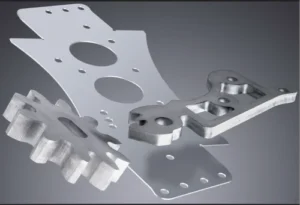
Aviation encompasses the design, construction, testing, and operation of aircraft, including airplanes, spacecraft, drones, and helicopters. The industry is characterized by strict regulations, high safety standards, and a continuous pursuit of efficiency and innovation.
Precision and quality assurance are paramount in the highly demanding aviation sector. Aircraft components must meet stringent standards to ensure the safety and reliability of air travel. This is where laser cutting technology comes into play. Laser cutting has become essential in aircraft manufacturing, enabling the production of precise, high-quality components with complex patterns.
Laser cutting has multiple applications in aviation, from fabricating structural components to engraving and marking item identifiers. For example, fuselage panels and engine components are manufactured using laser cutting to create complex structures with detailed patterns. Laser marking is employed to etch serial numbers, item numbers, and other critical information onto metal surfaces for traceability and quality control purposes.
Laser cutting holds paramount importance within the aviation industry. It facilitates the production of strong and lightweight components while meeting exacting performance standards. Laser cutting enables rapid customization and prototyping, allowing for faster development cycles and adaptability to evolving design requirements. By utilizing laser-cutting technology, aviation companies enhance the safety and reliability of their aircraft, maintaining high levels of precision and consistency in their production processes.
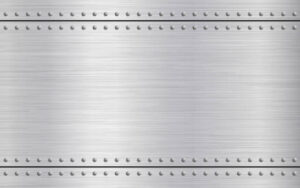
Laser cutting offers several benefits in the aviation industry. One significant advantage is its extreme precision, enabling the creation of complex shapes with tight tolerances. This precision enhances aerodynamic performance, fuel efficiency, and overall aircraft performance. Another benefit of laser cutting is its efficient use of materials, reducing waste and production costs. Being a non-contact process, laser cutting does not require expensive tooling and minimizes the risk of damaging sensitive materials. Laser-cutting technology contributes to the advancement of aviation by enabling the production of lighter, stronger, and more efficient aircraft components.
What is Laser Cutting?
Laser cutting is a manufacturing technology that uses a focused laser beam to cut through materials without requiring direct contact. It involves concentrating a high-powered laser on a small area of the material to create precise patterns or designs. The laser beam activates a lasing material within a confined chamber using electric currents or lights. Computer-controlled beam guidance systems are then used to manipulate and direct the beam.
During the laser cutting process, the material is heated to a point where it either melts or evaporates. A gas jet then removes the melted material from the cutting area, leaving behind precise cuts and a superior surface finish. Laser cutting technology enables the cutting of a wide range of materials into detailed and complex designs, including metals, polymers, woods, textiles, glass, and more. It has become indispensable in the manufacturing of medical devices, automobiles, aircraft, electronics, and other sectors due to its precision, speed, and versatility.
A laser cutter is a machine specifically designed for laser cutting operations. It consists of components for generating, controlling, focusing, and directing the laser beam onto the material to be cut, as well as systems for guiding it. These machines are often computer-controlled to ensure precise and repeatable cutting operations.
How Do Laser Cutters Work?
Laser cutters operate by harnessing a high-energy beam of coherent light radiation produced within a laser cutting machine. The device generating the laser beam contains an integrated resonant chamber. The cutting process begins by adjusting and focusing the beam using a collimator and lenses/optics to prevent divergence and concentrate the energy into a small spot. The concentrated energy melts and/or vaporizes the material along the predetermined cut line, with multiple passes sometimes required for thicker materials.
Air assist is commonly utilized during cutting to clear the cut area and cool the surrounding material by blowing away melted material, smoke, and debris. A CNC (Computer Numerical Control) axis system executes the cutting motion, moving either the workpiece, the laser optics, or both in the necessary directions to complete the cut. The motion is typically two-dimensional (on the X-Y plane), though some machines incorporate Z-axis movement to accommodate curved surfaces. Certain laser cutting tools also feature additional axes, facilitating the creation of shapes, curved lines, or more complex 3D objects.
Laser cutters employ a non-contact method to cut through various materials accurately and efficiently, including metals, plastics, wood, textiles, and more. They are widely used in numerous industries for tasks ranging from manufacturing complex parts and components to fabrication, prototyping, and engraving. Laser cutters offer unparalleled precision and versatility for a range of applications in the automotive, aerospace, electronics, and craft industries.
What are the Types of Materials Suitable for Laser Cutting?
The types of materials suitable for laser cutting include:
- Acrylic: A thermoplastic known for its clarity, durability, and versatility, often referred to as Plexiglas or Perspex. Acrylic that has been laser cut typically features smooth edges and is used for displays, signage, and creative projects.
- Cardboard: A lightweight and cost-effective material commonly used for packaging and prototyping. Laser cutting allows for precise cutting of complex patterns in cardboard, making it ideal for creating custom packaging, models, and art pieces.
- Foam: Materials like polystyrene and polyethylene foam are used for packaging, cushioning, and insulation. Laser-cut foam can be shaped into complex forms with smooth edges, suitable for architectural models and unique packaging inserts.
- Metal: Laser cutting is performed on various metals, including aluminum, stainless steel, brass, and carbon steel. Precisely shaped and cut metal using laser technology is useful in producing components for industries such as jewelry, automotive, and aerospace.
- Wood: A versatile material used in furniture making, crafts, and architectural projects. Wood that has been laser cut typically results in precise slices with minimal charring, making it ideal for engraving, cutting unique shapes, and creating intricate art pieces.
- Glass: Glass is generally not cut with lasers due to its fragility, but it can be laser engraved with complex patterns and designs. Glass is often laser engraved for decorative items like trophies and glasses.
- Cork: A durable, lightweight material derived from the bark of cork oak trees. Laser-cut cork can be shaped into intricate designs with clean edges, perfect for crafts, jewelry making, and product packaging.
- Leather: A robust and flexible material used in apparel, accessories, and furniture. Laser cutting leather allows for the precise cutting of detailed patterns, suitable for creating customized clothing, bags, and accessories.
- Plastic: Various plastics, including ABS, PVC, polycarbonate, and polyester, can be laser cut depending on their composition and thickness. Laser cutting plastic results in clean edges and precise cuts, ideal for prototyping, signage, and model making.
- HDPE (High-Density Polyethylene): A durable and versatile plastic known for its chemical and moisture resistance. HDPE can be precisely shaped and cut into specific patterns using laser cutting, making it suitable for industrial components, packaging, and signage, among other applications.
- Paper: A lightweight, easily cut material often used in crafts, printing, and packaging. Laser-cut paper can be designed with intricate patterns, making it perfect for creating paper art, greeting cards, and invitations.
- MDF (Medium-Density Fiberboard): An engineered wood product made from wood fibers bonded with resin. Laser-cut MDF results in sharp edges and precise cuts, ideal for crafts, furniture making, and architectural models.
- Stainless steel: A corrosion-resistant metal commonly used in utensils, tools, and construction materials. Stainless steel can be precisely shaped and cut using laser technology, making it suitable for producing components for various industries.
- Styrene: A thin, flexible plastic used in crafts, model making, and signage. Laser-cut styrene results in precise cuts with clean edges, making it ideal for prototypes, signs, and architectural models.
- Carbon fiber: A lightweight yet strong carbon material used in the automotive, aerospace, and sporting goods industries. Laser cutting carbon fiber allows for precision shaping and cutting of custom designs, suitable for producing components like drone frames, bicycle parts, and aircraft panels.
- Plywood: A versatile wood product made from layers of veneer glued together. Laser-cut plywood features sharp edges and precise cuts, making it ideal for crafts, furniture making, and architectural models.
- Polycarbonate: A strong, clear plastic used in impact-resistant products like machine guards and safety eyewear. Polycarbonate can be precisely shaped and cut to create specific shapes, making it useful for machine components, protective coverings, and signage.
- Polyester textiles: Durable, wrinkle-resistant, and colorfast synthetic materials. Laser cutting polyester fabrics allows for precise cutting of intricate patterns, making it suitable for textile art, furniture, and fashion.
What are Different Types of Lasers Used for Industrial Applications?
The different types of lasers used for industrial applications are myriad, each providing special benefits and abilities for certain production necessities. Laser beam welding is a technique that uses a concentrated laser beam to fuse metals together. The method is very exact and efficient, allowing for quick and precise welding of several materials. Industries like electronics, aerospace, and automobile manufacturers benefit greatly from laser beam welding, where precise welds and strict tolerances are crucial. It has advantages, including less distortion, less heat-affected zones, and easy welding of intricate designs.
Carbon dioxide (CO2) lasers are among the most widely employed in industrial settings. These lasers are excellent for cutting, engraving, and marking various materials, such as metals, polymers, and organic compounds, since they emit infrared light with wavelengths of around 10 micrometers. CO2 lasers are highly valued due to their cost-effectiveness, dependability, and adaptability. They are extensively used in the fabrication, packaging, and signs sectors for jobs like engraving serial numbers on produced products or cutting complex patterns in sheet metal.
The excellent beam quality, great power efficiency, and small size of fiber lasers have made them more and more popular in recent years. An optical fiber doped with rare-earth elements, including erbium, ytterbium, or thulium, is pumped with diode lasers to produce light. Fiber lasers are beneficial for quickly and precisely cutting and joining metals, such as titanium, aluminum, and stainless steel. They are frequently used for applications needing precise detail and close tolerances in sectors including medical devices, automobiles, and aircraft fabrication.
Manufacturers choose the technology that best suits their demands by looking at the advantages and capacity of different types of lasers. Lasers are essential to current industrial processes, pushing efficiency, quality, and innovation across various applications, whether high-speed marking, precise welding, or detailed cutting.
Can Laser Cutting Machine be used for Laser Marking?
Yes, laser-cutting machines can be used for laser marking purposes. Laser cutting machines, or laser machines, are multipurpose devices that carry out a range of laser-based operations, such as marking, engraving, and cutting. Laser marking is the process of leaving markings or patterns on a material’s surface without actually cutting through it, in contrast to laser cutting, which mainly entails cutting through materials.
Laser marking works on the same core principles as laser cutting, with a high-energy laser beam focused onto the material’s surface. The laser beam doesn’t cut through the material, though. Lines are made by rusting, melting, or changing color as it reacts with the surface. It enables very accurate and detailed permanent, high contrast mark production.
Laser-cutting machines are modified for laser marking by modifying factors such as laser power, speed, and focus. Operators adjust these settings to generate various marking effects, such as deep engraving, foaming, annealing, surface engraving, or color change, according to the material and intended result.
A laser cutting machine’s adaptability is one benefit of laser marking. Laser-cutting machines quickly and easily switch between cutting and marking tasks because they come pre-configured with strong laser sources, accurate motion control systems, and intuitive software interfaces. Manufacturers that need to be able to cut and mark in the same manufacturing environment benefit significantly from them.
Laser marking has several advantages over conventional marking techniques, including inkjet printing, etching, and stamping. Laser marking is non-contact, which means it does not need direct contact with the material surface, lowering the possibility of damage or contamination. It provides marking at a high rate of speed, enabling the consistent quality and accuracy of large volumes of components to be processed efficiently.
Using a laser cutting machine for laser writing increases its usefulness and effectiveness in many fields, such as making medical devices, cars, and spacecraft. A versatile and effective method for producing long-lasting, superior marks on various materials is Laser Marking using a laser cutting machine, whether the markings are logos, barcodes, serial numbers, or other identifying marks.
What are the Benefits of Laser Cutting for Industrial Applications?
The benefits of laser cutting for industrial applications are listed below.’
- Precision: The creation of intricate, complex designs with accuracy down to a fraction of a millimeter is made possible by the extraordinary precision offered by laser cutting. Its degree of accuracy allows producers to create high-quality goods and guarantees constant quality.
- Versatility: Metals, plastics, woods, textiles, and various other materials are all cut using laser cutting, making it a very flexible tool. Laser cutting is appropriate for various industrial applications in different sectors due to its adaptability.
- Efficiency: Laser cutting is a rapid and precise method that cuts through materials with great speed and accuracy. Manufacturers fulfill deadlines and promptly react to consumer requests due to the shortened manufacturing times and enhanced efficiency.
- Minimal Material Waste: Laser cutting leaves less waste than other cutting methods. Cutting with a minimum kerf width maximizes material use and minimizes trash due to the accuracy of laser cutting.
- Customization: Manufacturers quickly make unique and customized items using laser cutting to customize patterns. Its versatility benefits businesses like jewelry, prototyping, and signs where personalization is crucial.
- Clean Cuts: Laser cutting eliminates the need for extra finishing steps by producing smooth and clean edges. It saves time and money by doing away with the necessity for subsequent processes like deburring or sanding.
- Non-contact Process: The cutting tool and the material surface do not come into direct physical touch during the non-contact laser cutting process. It lessens the possibility of contamination, material deterioration, or damage, especially for fragile or sensitive materials.
- Automation: High-volume production with little human interaction is possible because of the simple integration of laser cutting into automated manufacturing processes. Its automation boosts total process control, lowers labor costs, and increases efficiency.
- Minimal Tooling Requirements: Laser cutting eliminates the need for several specialized tools and dies, unlike conventional cutting processes. Laser cutting is a cost-effective production option since it streamlines setup and lowers tooling costs.
- Environmental friendliness: Laser cutting is a more environmentally friendly cutting technique than others. It promotes sustainable production through reduced refuse generation, energy consumption, and contaminant emissions. These benefits to the environment add to the overall Benefits of Laser Cutting, which makes it the material of choice for businesses looking to use less harmful production processes.
What are the Limitations of Laser Cutting for Industrial Applications?
The limitations of laser cutting for industrial applications are listed below.
- Material Thickness: Cutting too thick materials is less successful when using laser cutting. The ability to cut large materials needs numerous passes or different techniques, even though advances in laser technology have expanded the cutting capabilities.
- Material Type: Some materials are difficult to cut with lasers owing to their composition or qualities. Reflective materials like copper or aluminum reflect the laser beam, lowering cutting efficiency. Materials with strong thermal conductivity, such as certain ceramics, are difficult to cut due to heat dissipation.
- Cost: The initial outlay for laser cutting equipment is substantial, especially for high-power or sophisticated feature-rich systems. Ongoing costs are attributed to consumables such as laser gasses and optics, maintenance, and operational costs.
- Edge quality: Laser cutting creates accurate, clean edges, but there is a chance that certain materials have thermal distortion or heat-affected zones close to the cut edges. The cut’s quality is impacted, and more post-processing is necessary for the intended effects.
- Complexity: Laser cutting works best on flat or 2D materials; it is difficult to cut intricate 3D structures. Complex 3D geometries still need extra machining or assembly steps, even with specific laser systems’ multi-axis capabilities helping to overcome the restriction.
- Environmental Considerations: Laser cutting emits pollutants and needs appropriate ventilation and waste management measures to reduce environmental effects, even though it is typically more ecologically benign than conventional cutting technologies.
- Safety Concerns: Laser cutting requires high-power lasers, which endanger operators if not utilized correctly. Proper training, safety procedures, and protective gear are necessary to reduce these hazards and guarantee a secure workplace.
- Material Handling: Some materials need particular handling considerations while laser cutting, such as using assist gasses or fixtures to minimize warping or distortion during cutting. Achieving the best cutting results requires the use of appropriate material handling procedures.
- Regulatory Compliance: Regulations about workplace standards, pollution, and laser safety apply to laser cutting operations, depending on the industry and region. Adherence to these laws adds intricacy and needs extra resources.
- Machining Speed: Laser cutting is often rapid and efficient, although cutting certain materials or designs with intricate features takes longer. Optimizing cutting parameters and processing techniques speed up machining, although additional testing and effort are needed. These factors illustrate some Limitations of Laser Cutting, mainly when accomplishing high-speed cutting for detailed patterns or intricate materials.
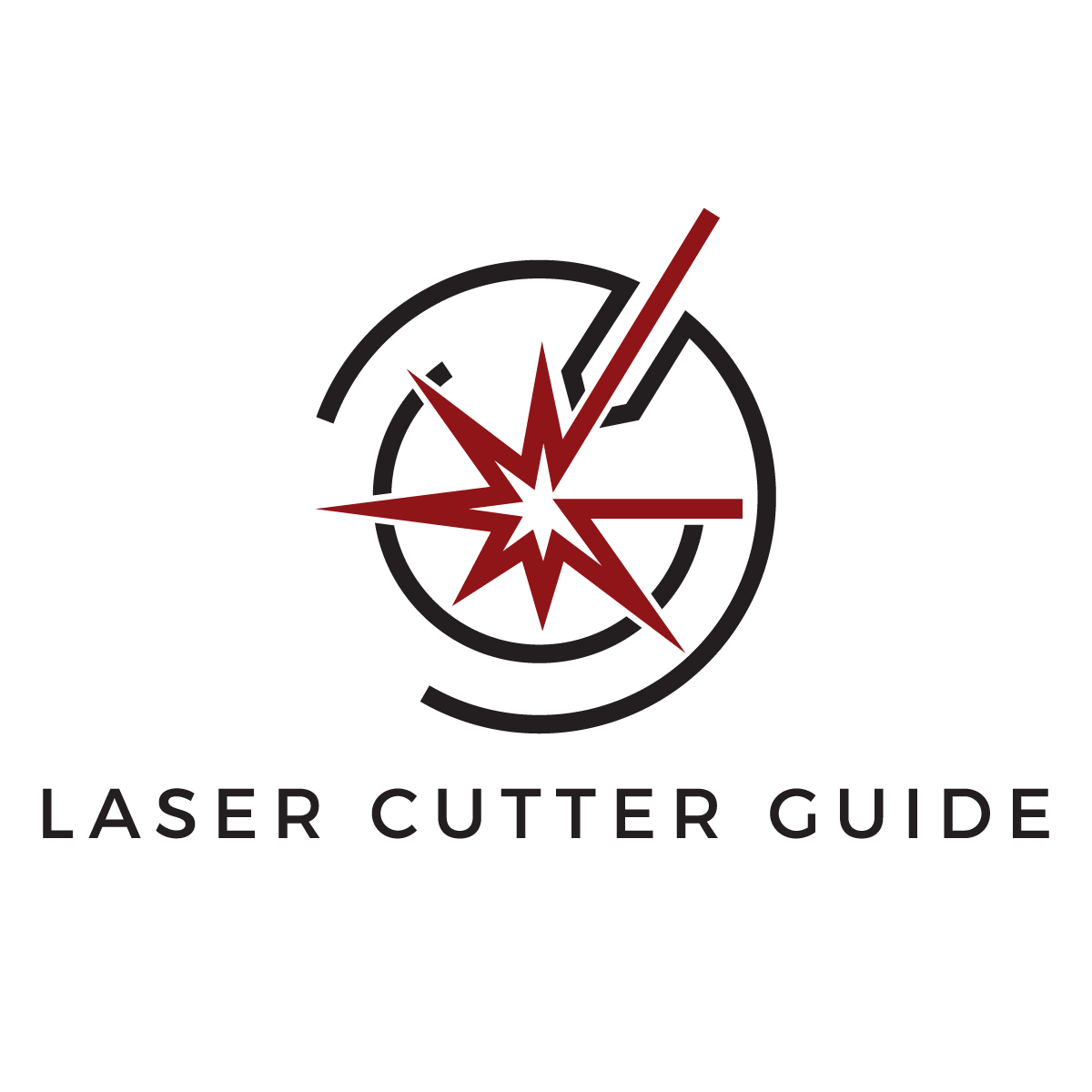
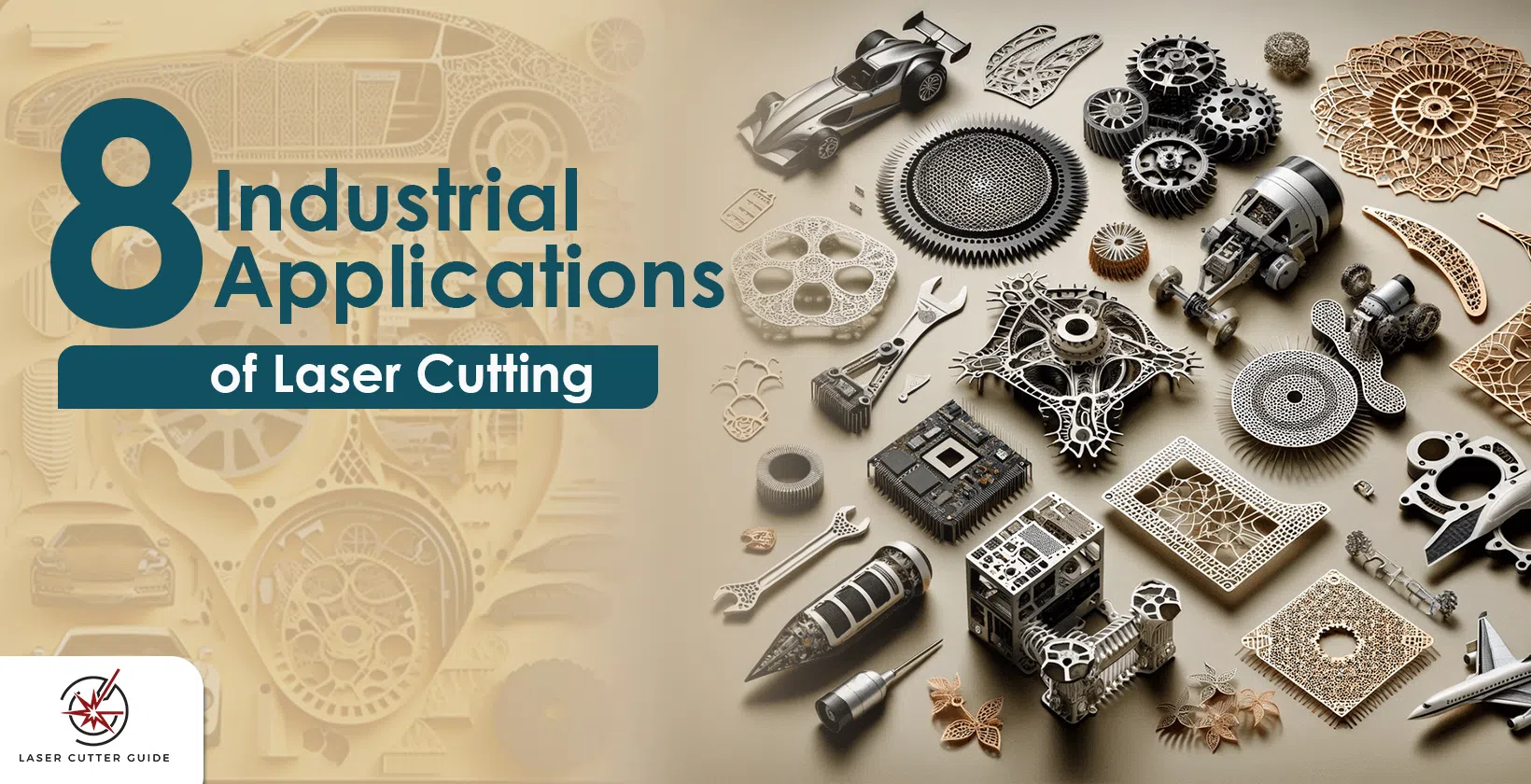
Very informative but one industry that laser cutting is growing is the building industry in both the residential or commercial building and utilizing both wood or steel material. A CNC laser can fabricate foundational or framing structures for example with much greater efficiency and precision than contractors using traditional tools on site.